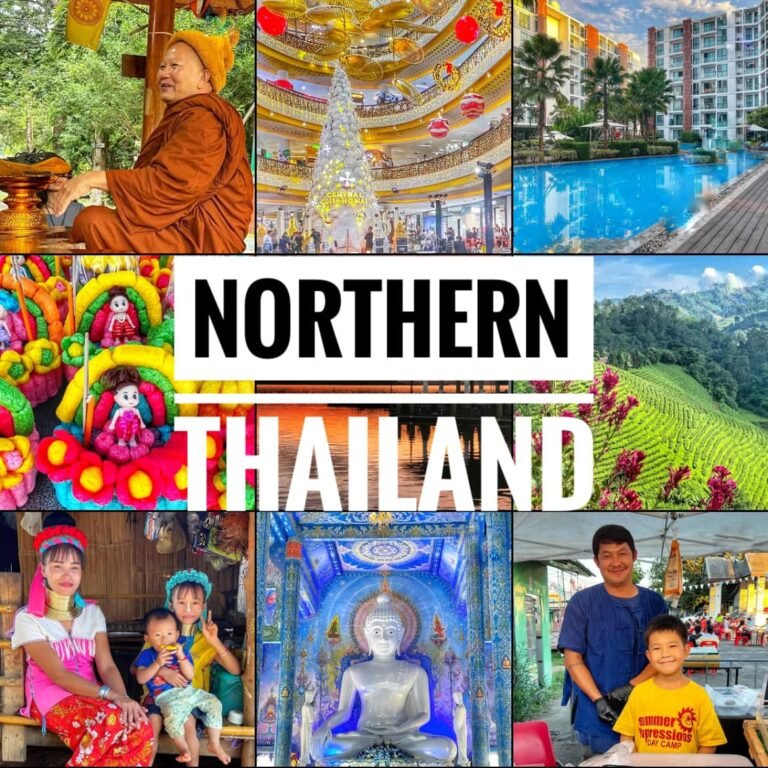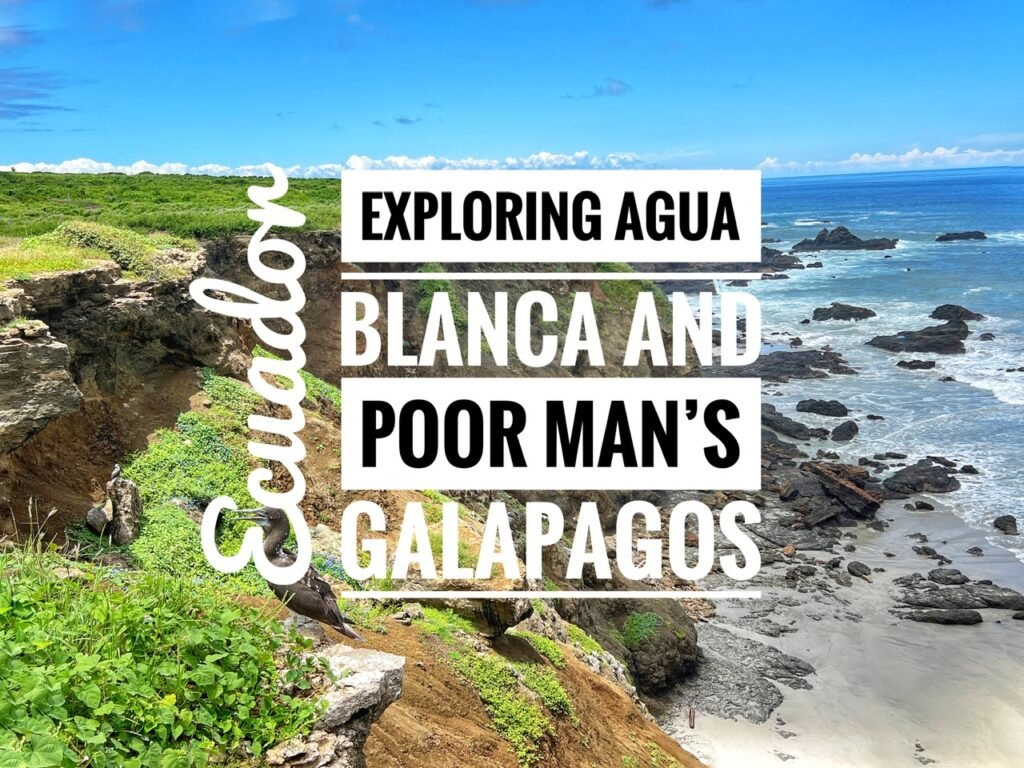
Although many people head to Ecuador solely for an excursion to the Galápagos Islands, we knew that it wasn’t in the wallet cards for us…this time. Thus, we happily settled for Isla de la Plata which is known on the backpacker circuit as “Poor Man’s Galapagos.” The tour agencies say, “Here you can see a small (more like teacup-sized) sampling of both the terrain and the wildlife that exist on the real Galapagos,” which is at least $2k and 600 miles out in the ocean. Ours was $80 (both of us) for the day trip and although we know it’s far from the real deal, overall it was a good experience and we’re happy we did it. Plus, we got to see lots of boobies….
Isla de La Plata
The lush uninhabited and protected Isla de la Plata offers turquoise waters, blankets of wild flowers and sensational cliffy views along multiple walking paths. The name, Silver Island, has three possible explanations: 1) it’s where ancient civilizations buried their silver treasure (probably to hide it from the stealing Europeans), 2) it is where Sir Francis Drake allegedly buried his treasure or 3) It may refer to the glistening bird droppings that shine in the moonlight 🤔🤣
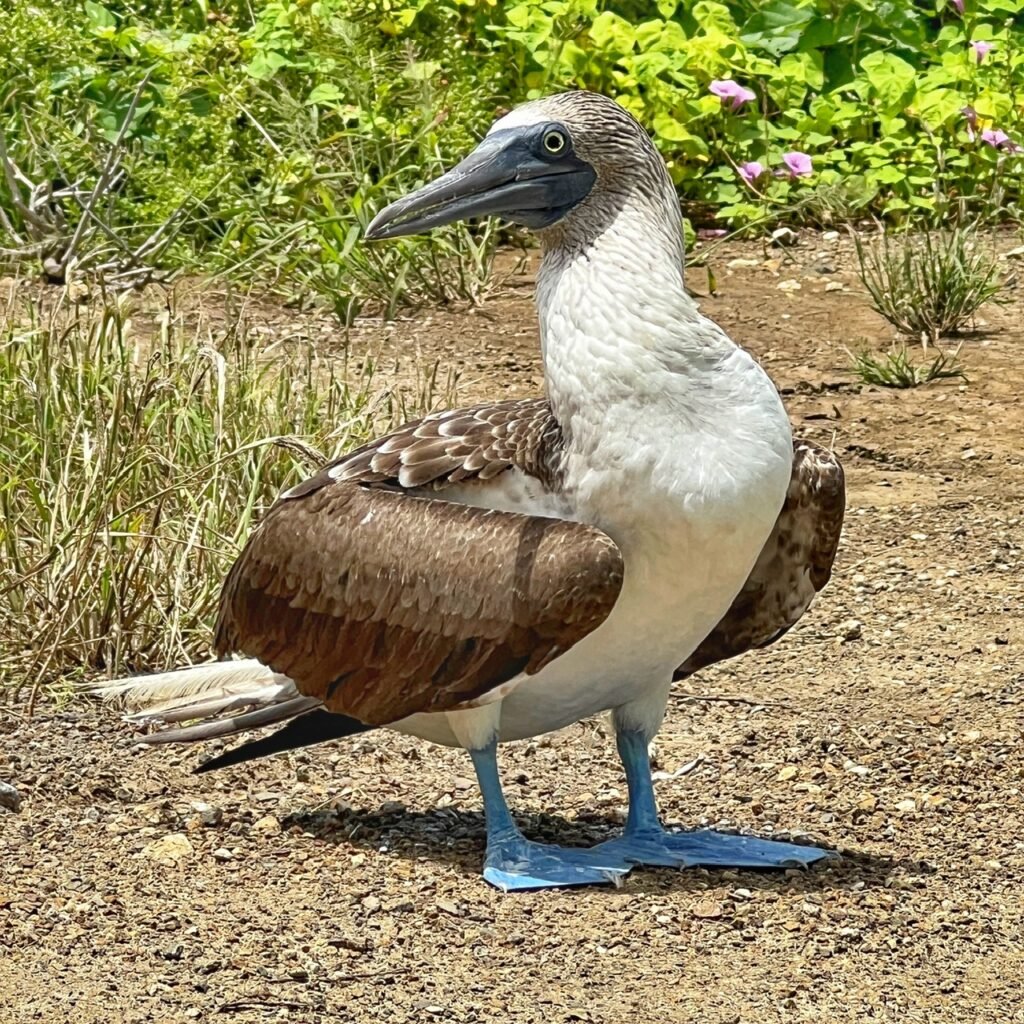
Regardless, the two-square mile island is a hotbed of biological diversity. One of the more popular residents is the Blue-Footed Booby, who seem completely oblivious to the tourists sticking phones within six feet of their cute little blue feet.
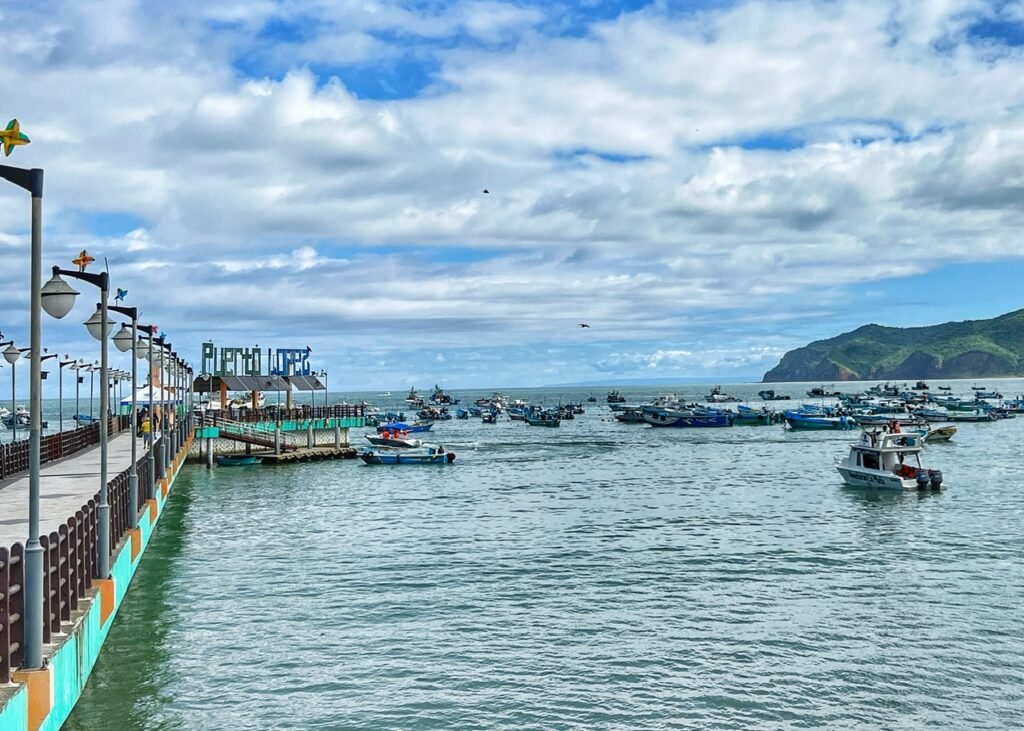
We left from the dock in Puerto López with our chosen tour agency, Aventuras de Plata. As you might have guessed, taking a guided tour is the only way to gallivant the island. As we waited to get going, we started chatting with the other travelers on the tour, most of whom were from Canada or Europe.

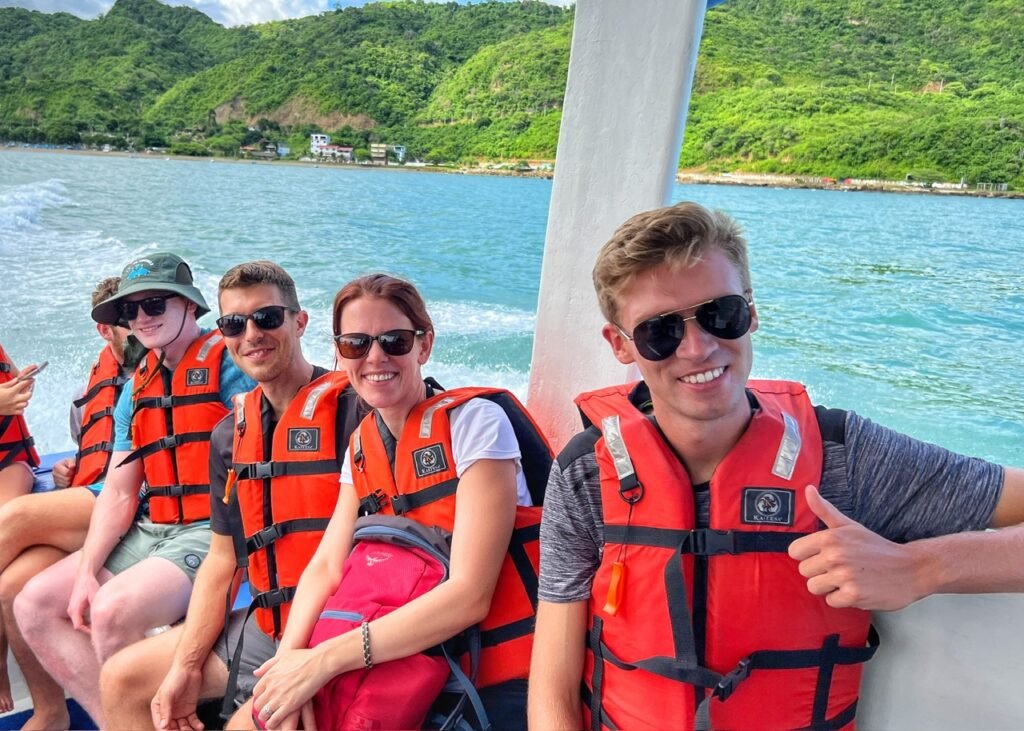
Our group. This is not the first tour we’ve been on where they required a life jacket on the way out, only to abandon those rules entirely on the return. Other than a 60-something American lady, we definitely appeared to be the oldest in the backpacker pack. We generally don’t mind this. 🤣


The 25-mile trip out to the emerald island took about an hour. We were surprised to see it so barren of trees. Ah, this must be why the guano sparkles so brightly!
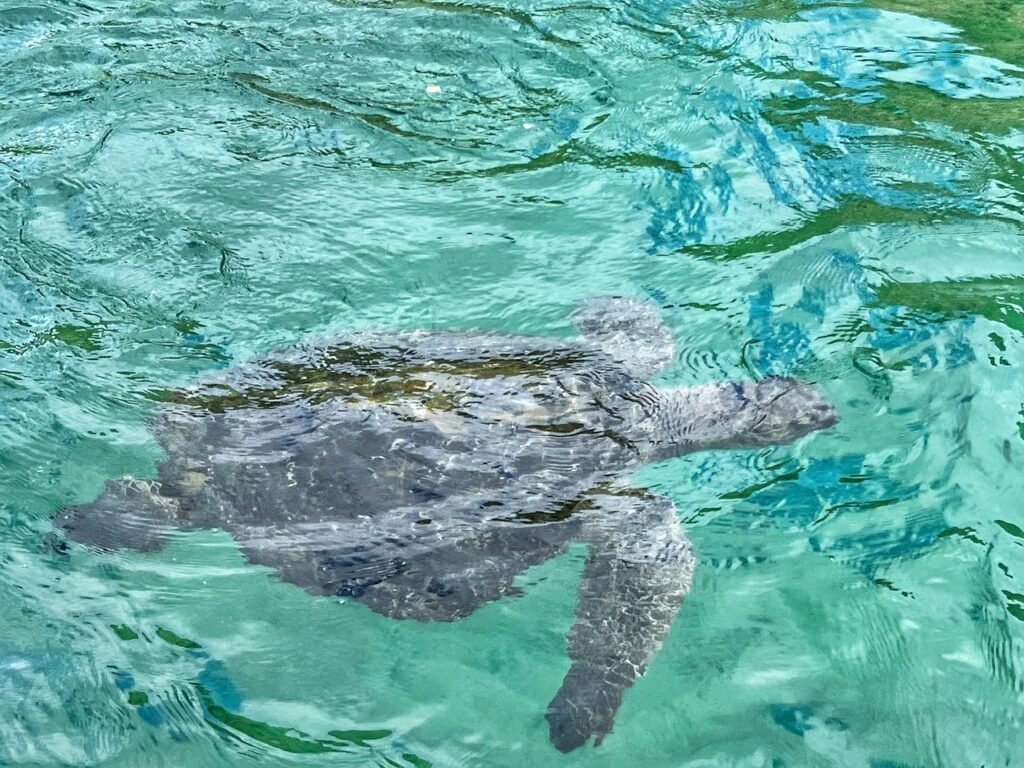
Our first stop was to visit the resident population of green sea turtles. Unfortunately tortoises are reserved for the actual Galápagos Islands.These turtles stay in the water exclusively except to lay their eggs, which miraculously always happens on the same beach they were born. When they lay their eggs on the sand, the temperature of the sand determines the sex of the turtle. If they lay their eggs in cooler, shaded sand, males would be born. If not, females. At the park, the rangers have been relocating eggs of female turtles to shaded areas in order to equalize the gender gap.

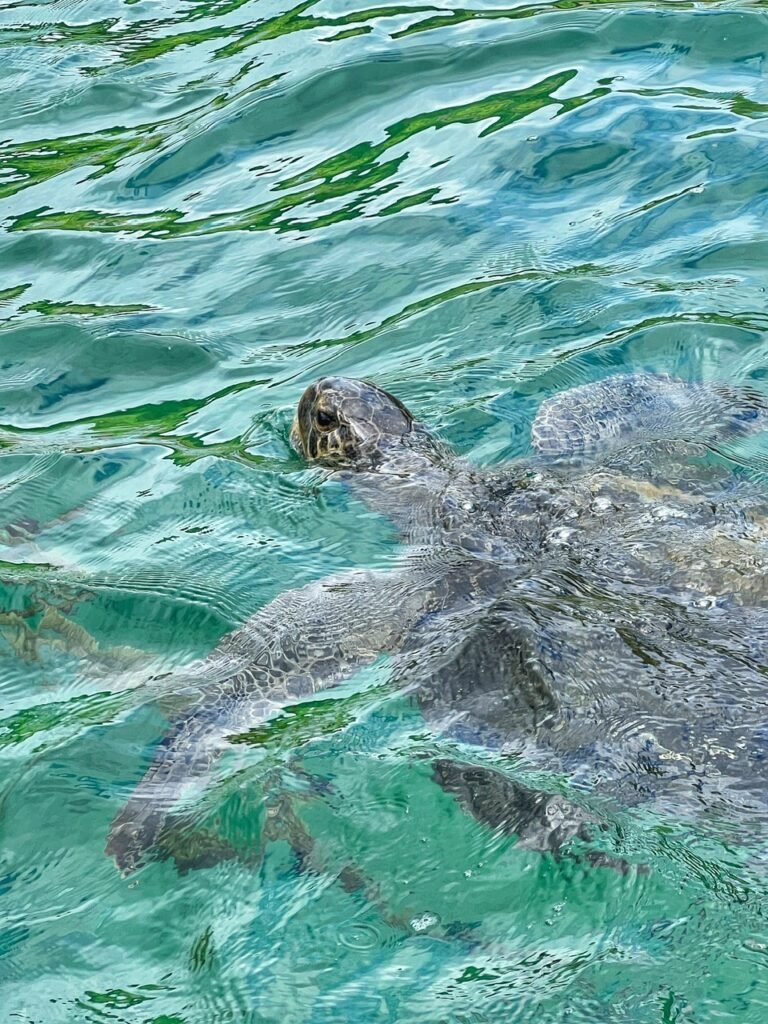
Our English-speaking guide baited them with watermelon rind.
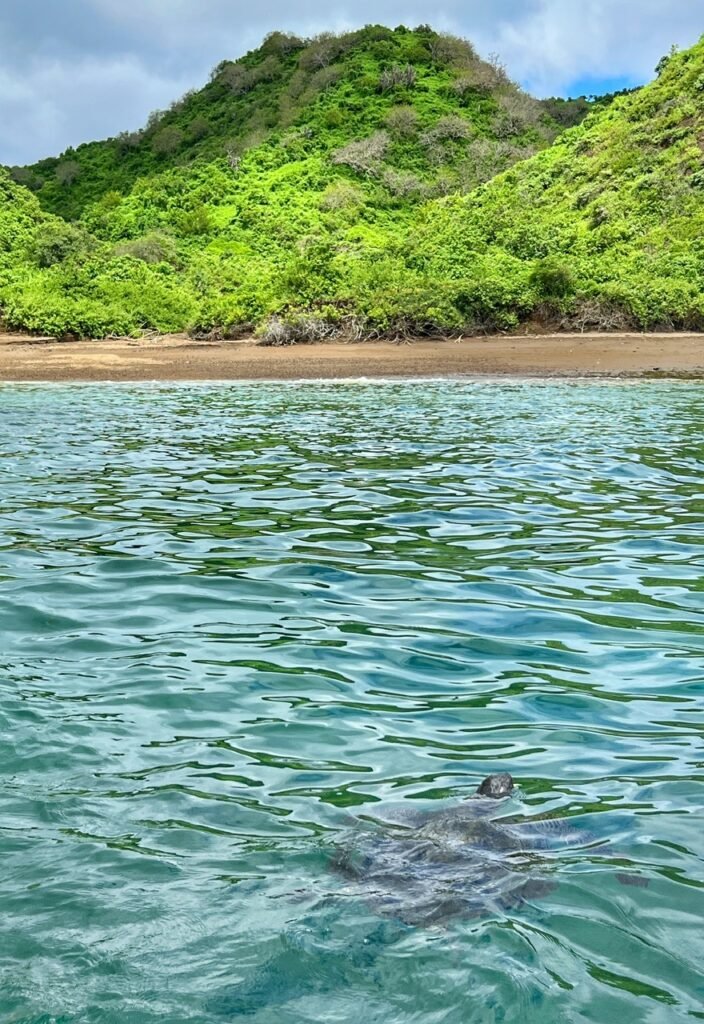
Doesn’t seem like a bad place to live! Unfortunately, they are endangered due to incidental catch in fisheries, habitat loss and of course, marine garbage. 😢
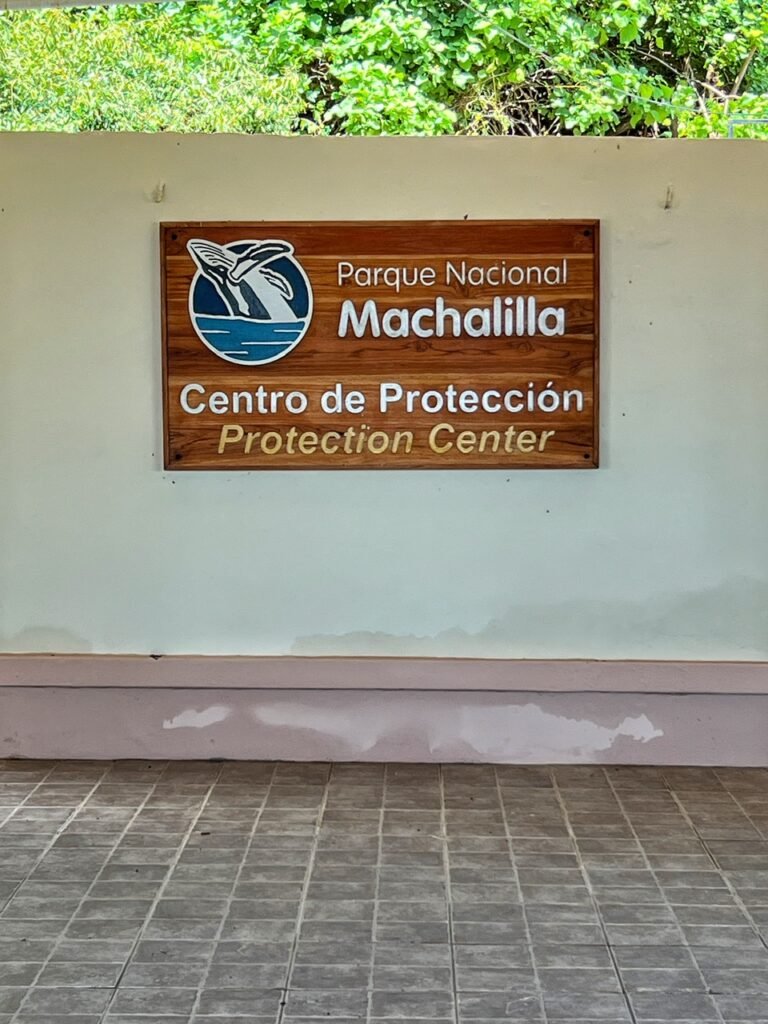
Checking out the visitor’s center. And the baños.
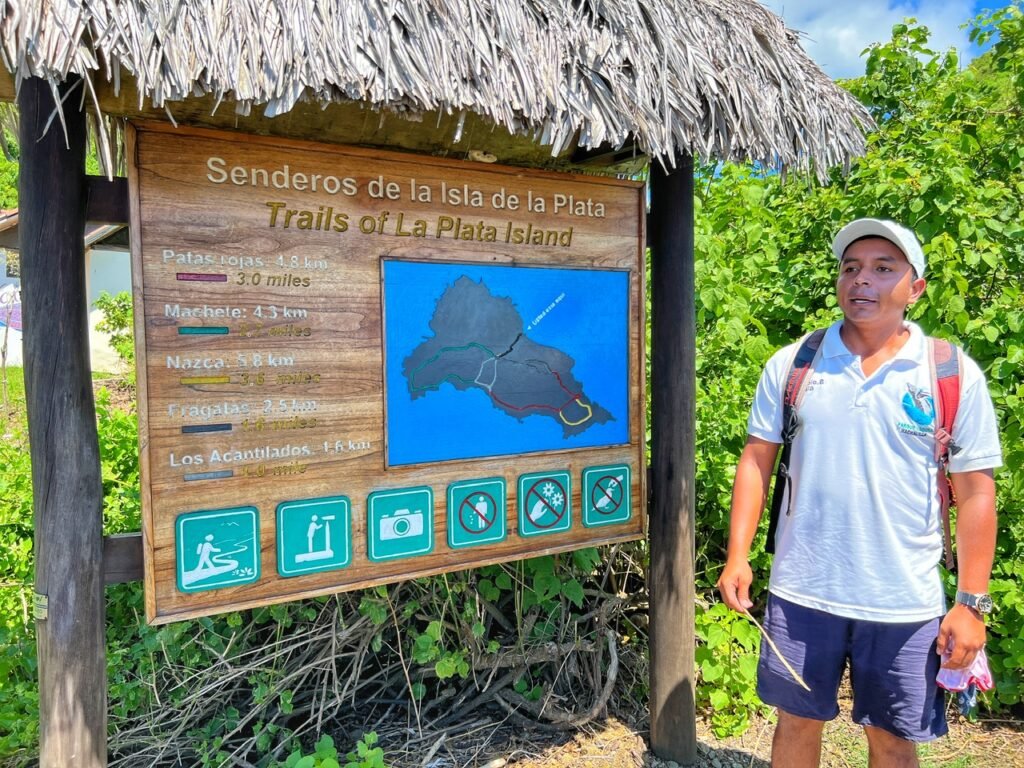
Our guide explaining the different trails of the island. One of the trails was closed for the season and one is never accessible to tourists because it is full of albatrosses. Since these birds are highly endangered and threatened by human interaction, it’s understandable we couldn’t visit that trail. Quite disappointingly, we then had to choose between one of the other two trails. One promised the Blue-Footed Booby and one, the Frigate birds, and it was mating season. Everyone except us immediately wanted the boobies (the jokes were incessant) but, we had a really tough time making the decision. In the end, we too ultimately wanted boobies more.
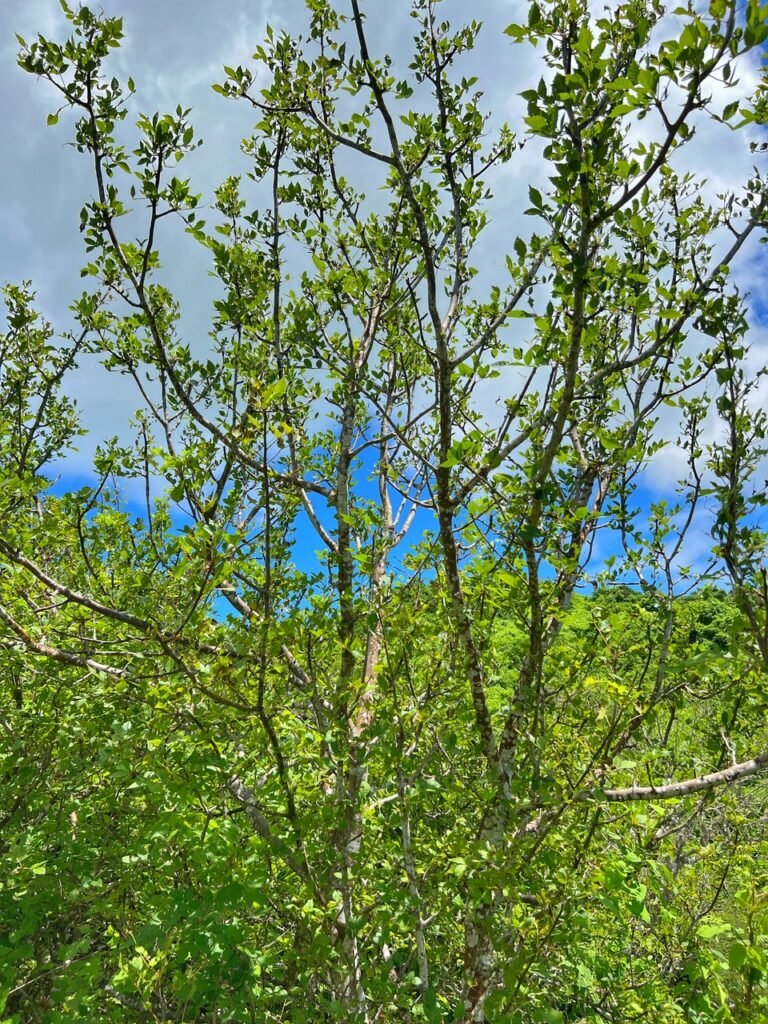
The Palo Santo tree is known for warding off mosquitoes. In fact, there are absolutely zero on the entire island. This was worth the break from the mainland in itself 🤣
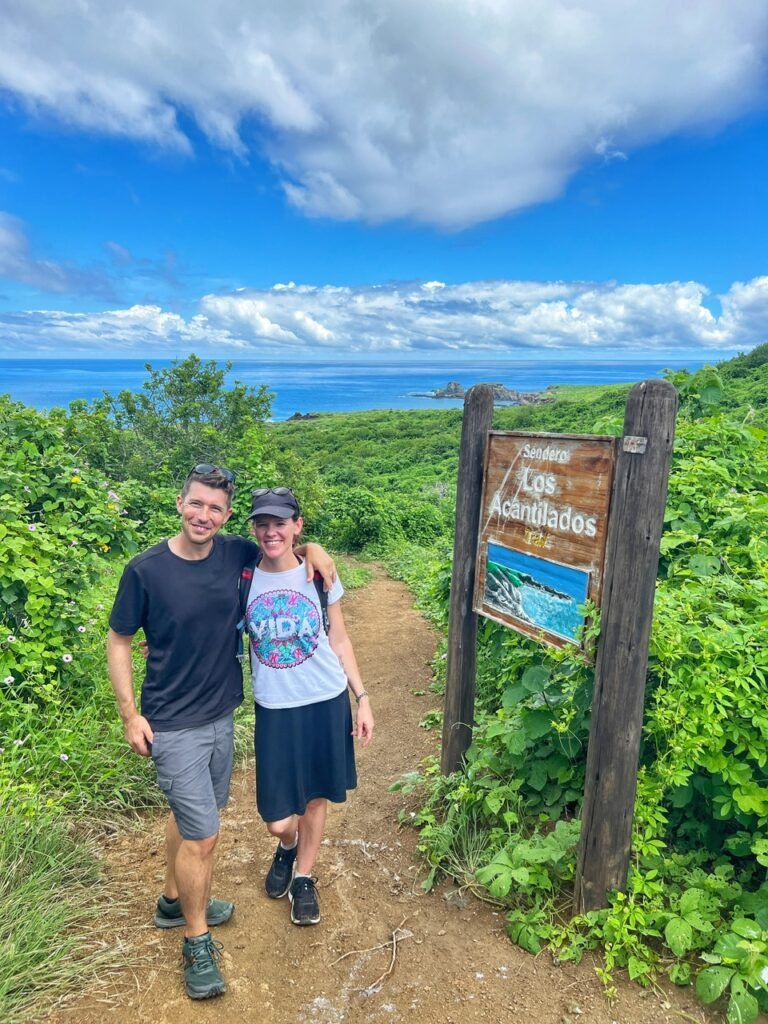
Yeah, this trail meaning “the cliffs” doesn’t look too shabby.
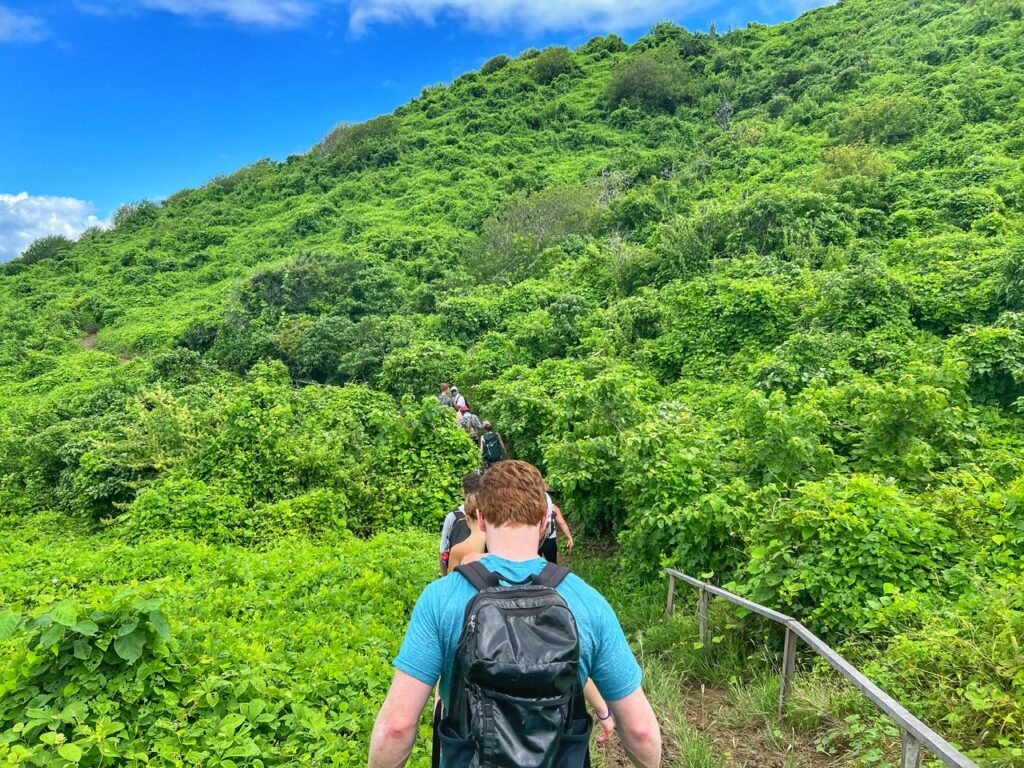

We’re not used to being sheeple when we hike but alas, it’s what you gotta do here!
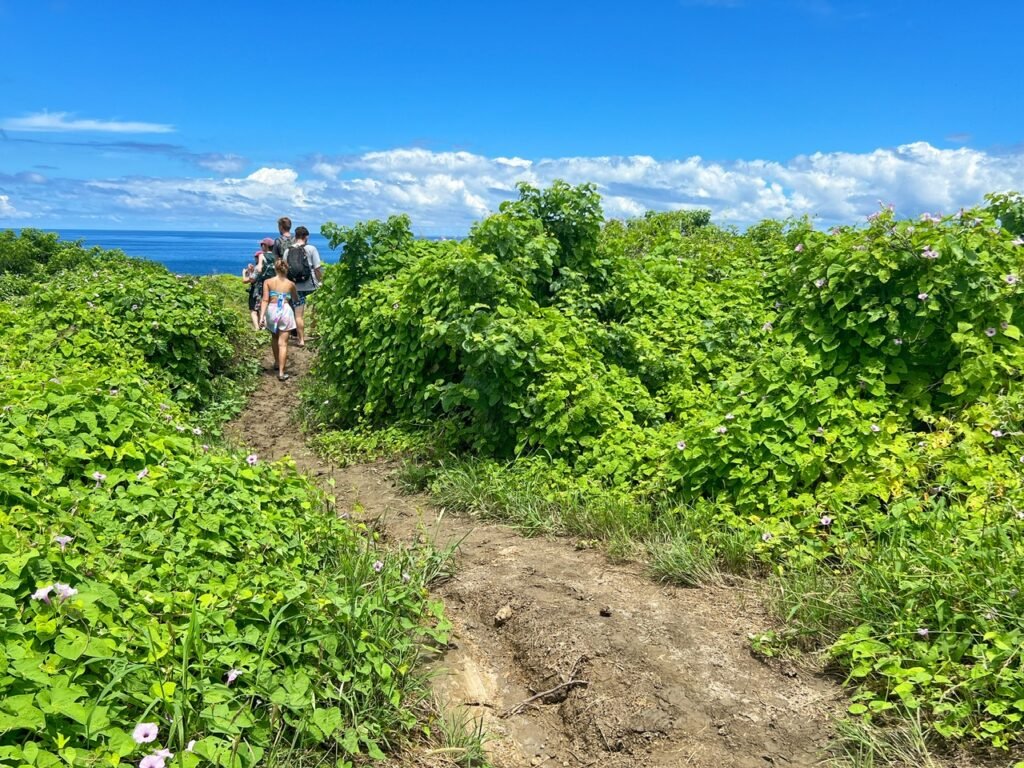
As you can see, there are few trees so the sun was pretty intense. Lots of sunscreen and lots of water is required here!

Blankets of wildflowers.

Spotting our first Blue-footed Boobies. These birds are only native to tropical and subtropical islands in the eastern Pacific Ocean. In this case, the female is slightly larger than the male and can measure up to 90 cm (35 in) long with a wingspan up to 1.5 m (5 ft).
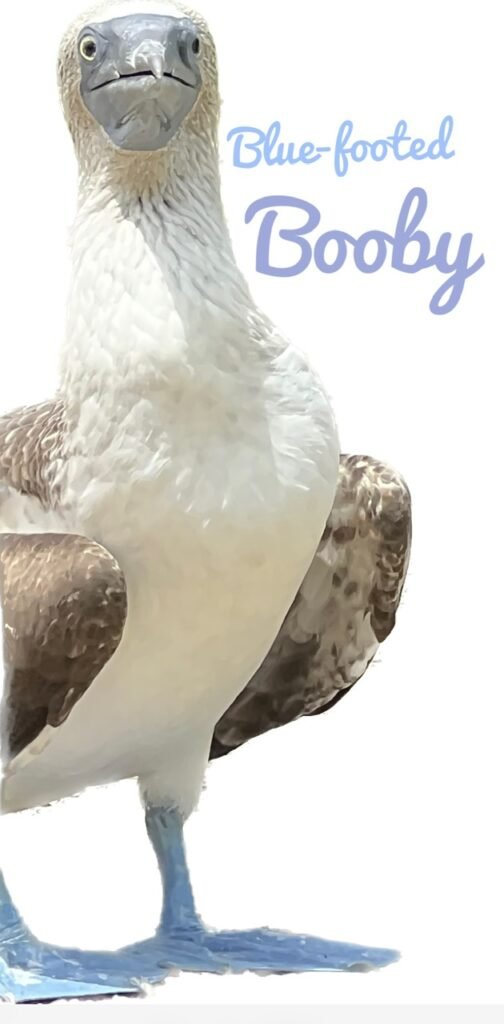
Blue-footed Boobies aren’t born with blue feet. They only turn this color upon maturity. This particular booby was a female, which you can tell by 1) the color of her feet are even brighter blue than her male counterparts and 2) the size of her…

…pupils…ha…you thought I was gonna say something else, eh?
Although the boobies were fun, the most spectacular part of the hikes was the landscapes.

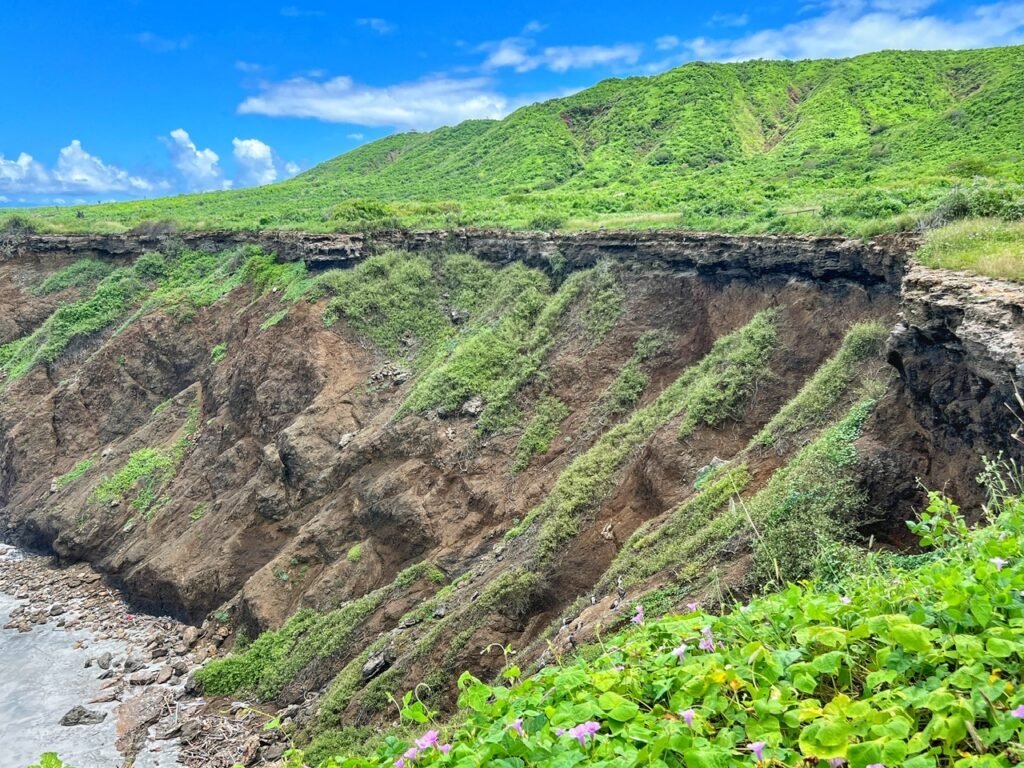
It is one these cliffs that the boobies love!
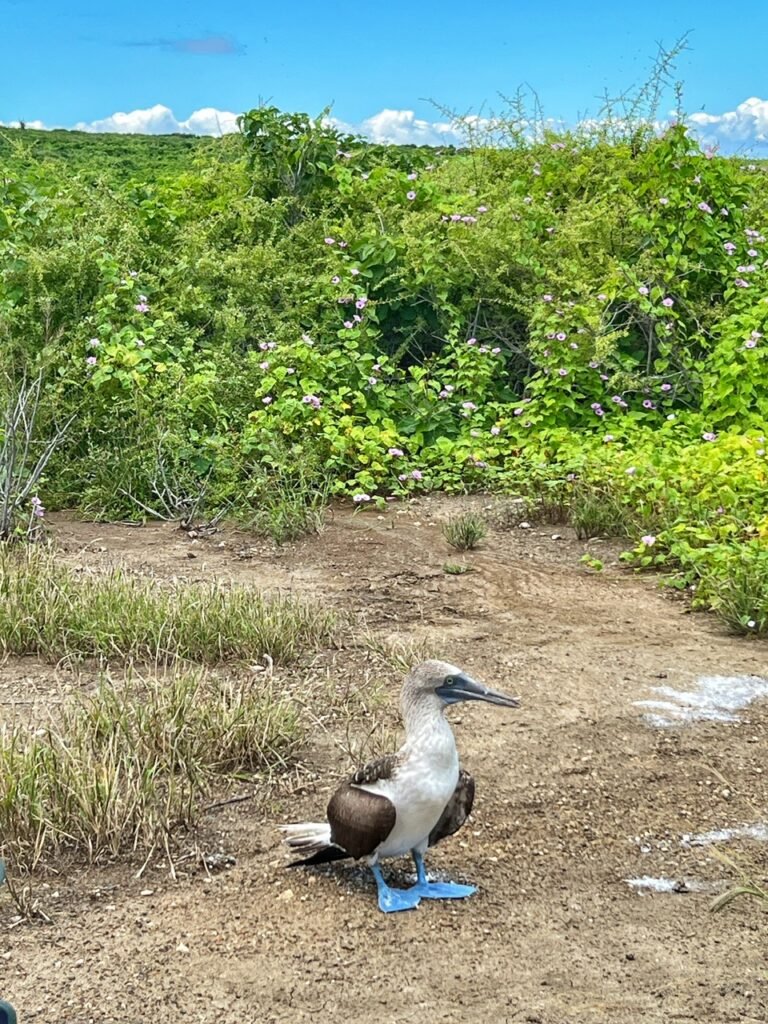
Perhaps one of their most interesting characteristics is how blue-footed booby couples will do a dance, by walking side-by-side and lifting their feet in unison. Evidently it’s quite hilarious if you’re lucky enough to see it! We watched on YouTube but weren’t lucky enough to see it in person.

Mandy tries to show her feet to this booby but he didn’t seem too interested.
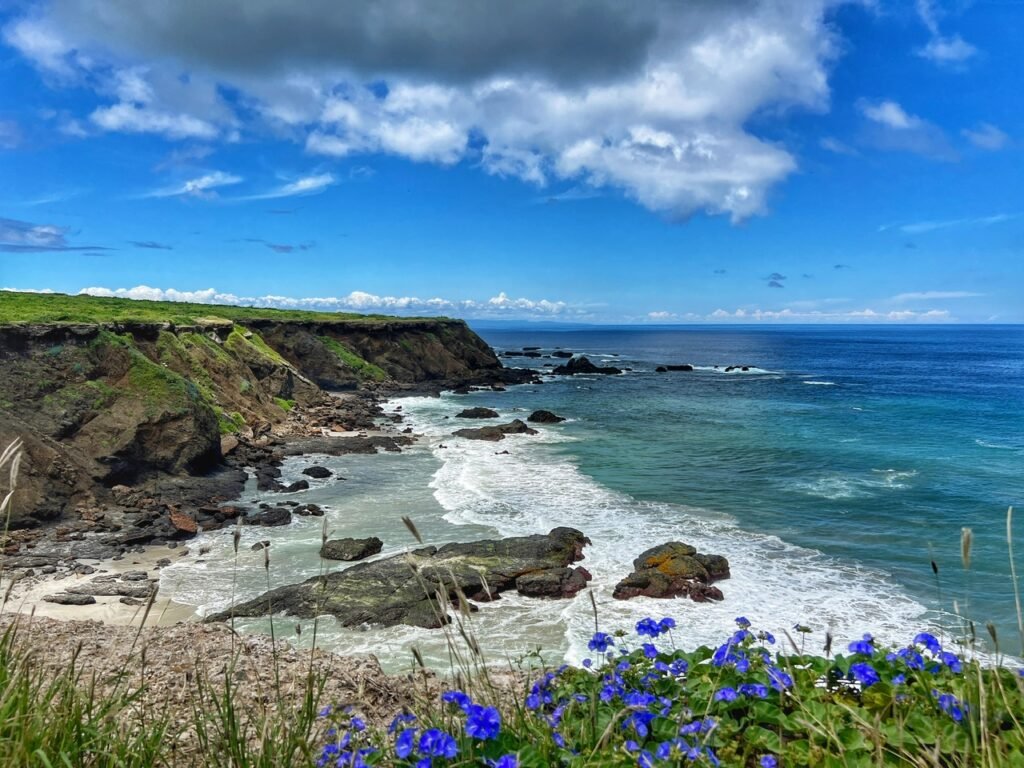
Gazing down the coast.
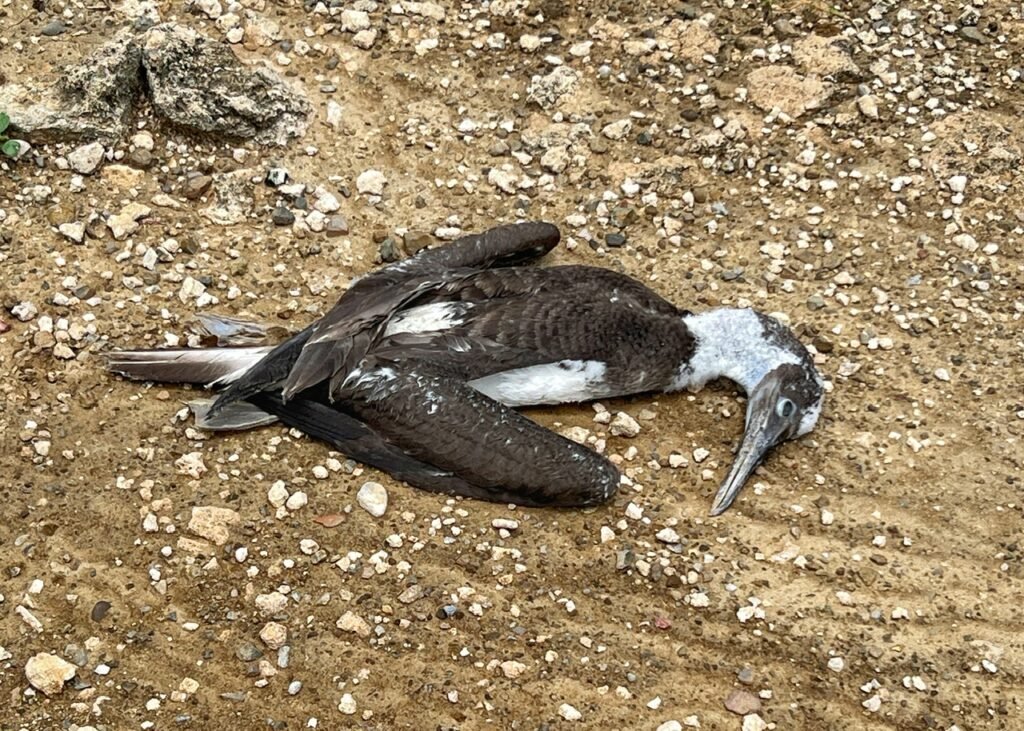
Circle of life 😢


What we didn’t get to see (up close) on Isla Plata was the Frigate birds. Fortunately, we saw many of them in Panama recently. They are much more widespread than boobies in sub and tropical regions, which is one big reason we went with the boobies. Frigatebirds are the only seabirds that lack waterproof feathers so they can’t land on water.
What we didn’t see was them during mating season, when the males inflate their brilliant red throat sacks (seriously, it never stops) to attract a mate. We also learned it’s a very good thing that these two birds weren’t on the same part of the island. Because they can’t land on water, Frigate birds are infamous thieves and will take hold of boobies’ tail feathers and violently shake them until they give up their catch. Poor boobies.

By the time we got back to the boat, it was 1 pm and we were scorching in the midday heat. Lots and lots of sunscreen needed here at equatorial level. When we got back on board we ate a mediocre lunch of two sandwiches and some fruit.
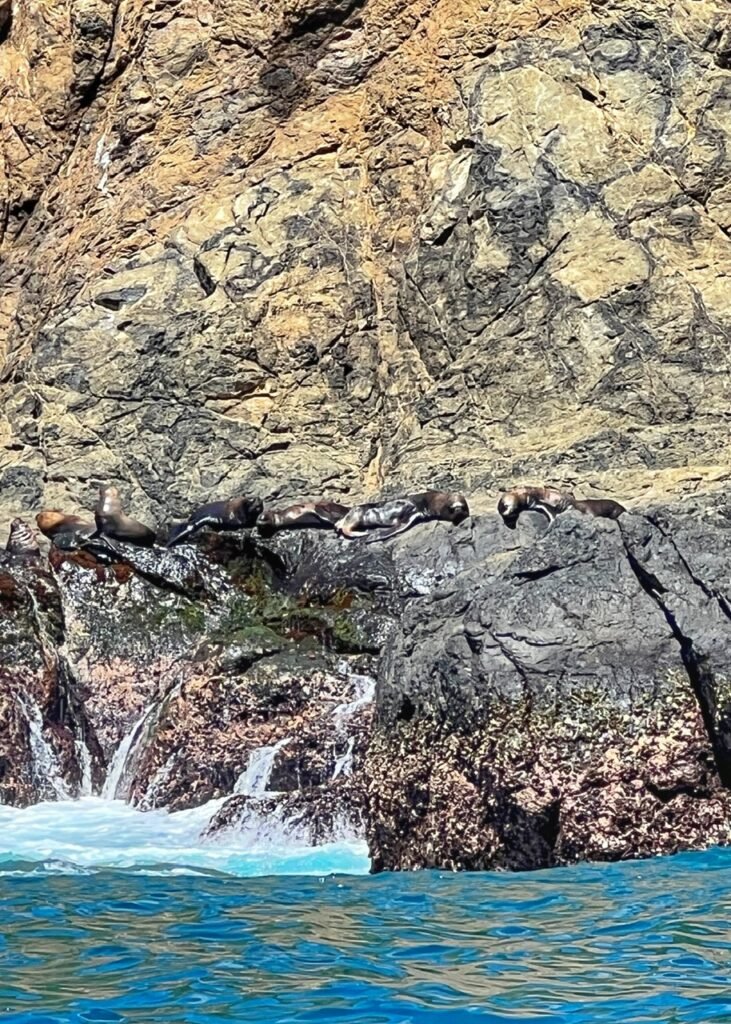
The South American sea lion seemed a lot quieter than the US versions we’ve seen on the Pacific coast. Oh those Californians 🤣
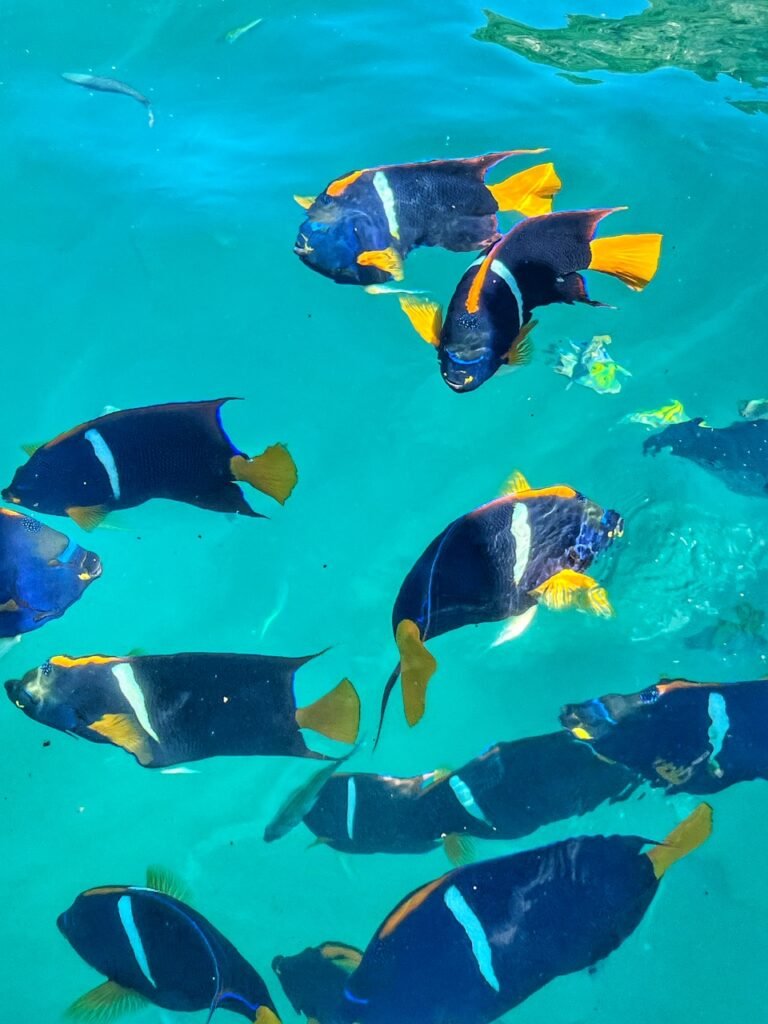
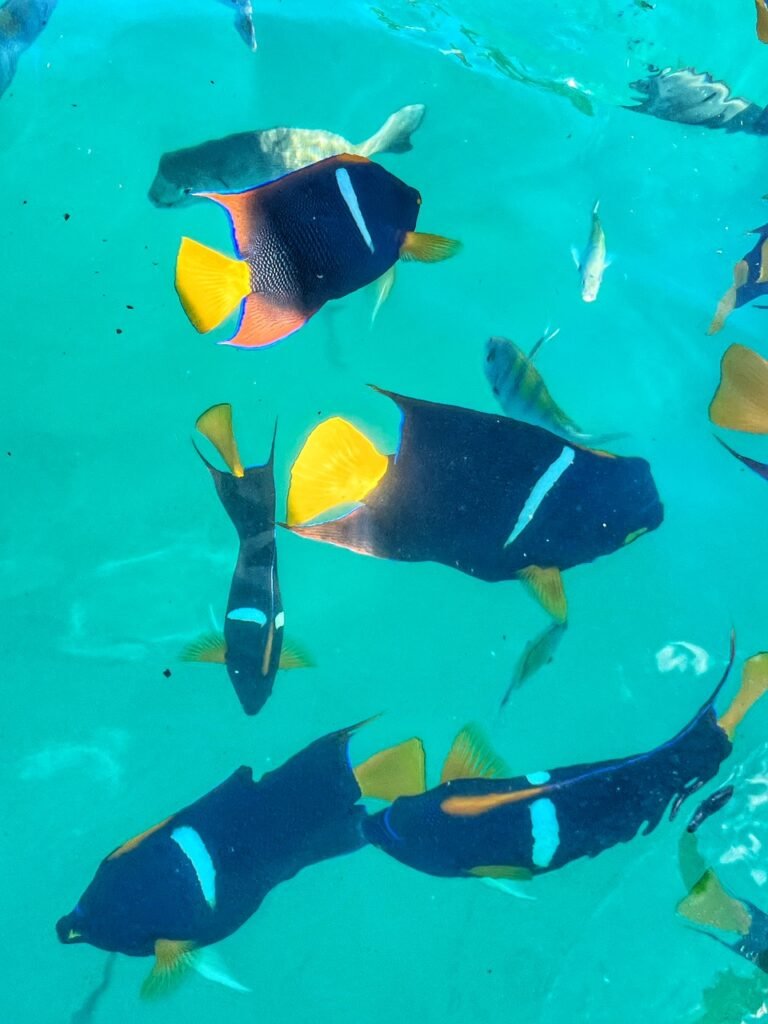
Arriving to our snorkeling spot, with absolutely splendid tropical fish.
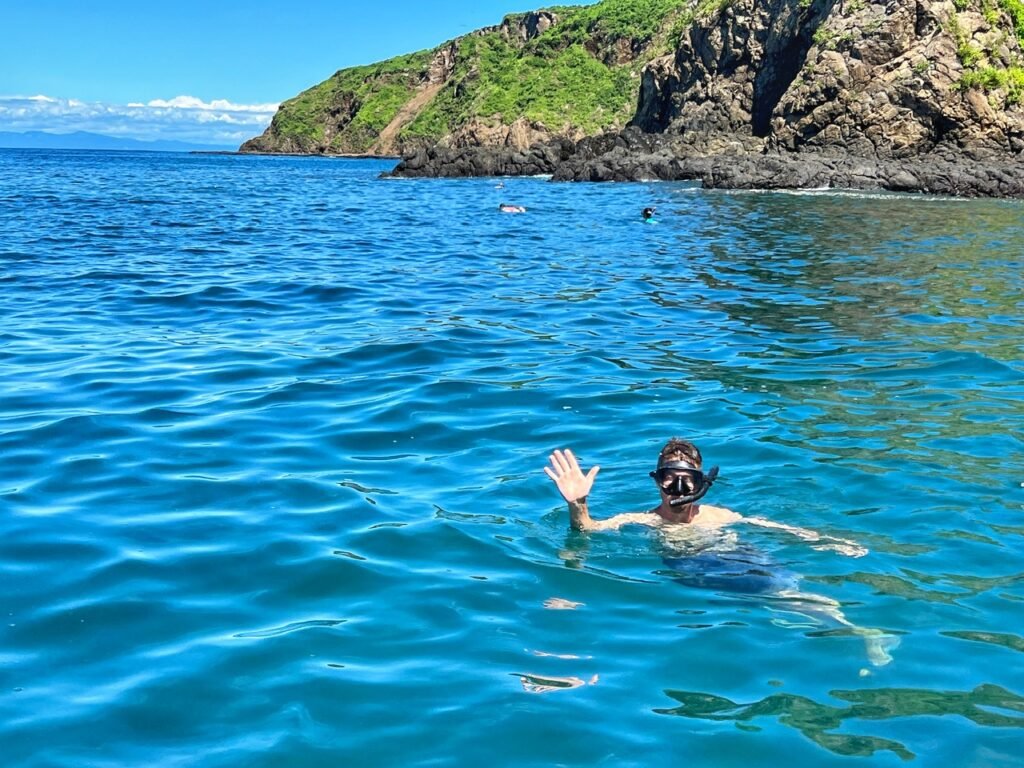
…which looked far more enticing from the boat than in the actual water. Unfortunately the rains the day before had stirred up the water quite a bit and made it really murky.
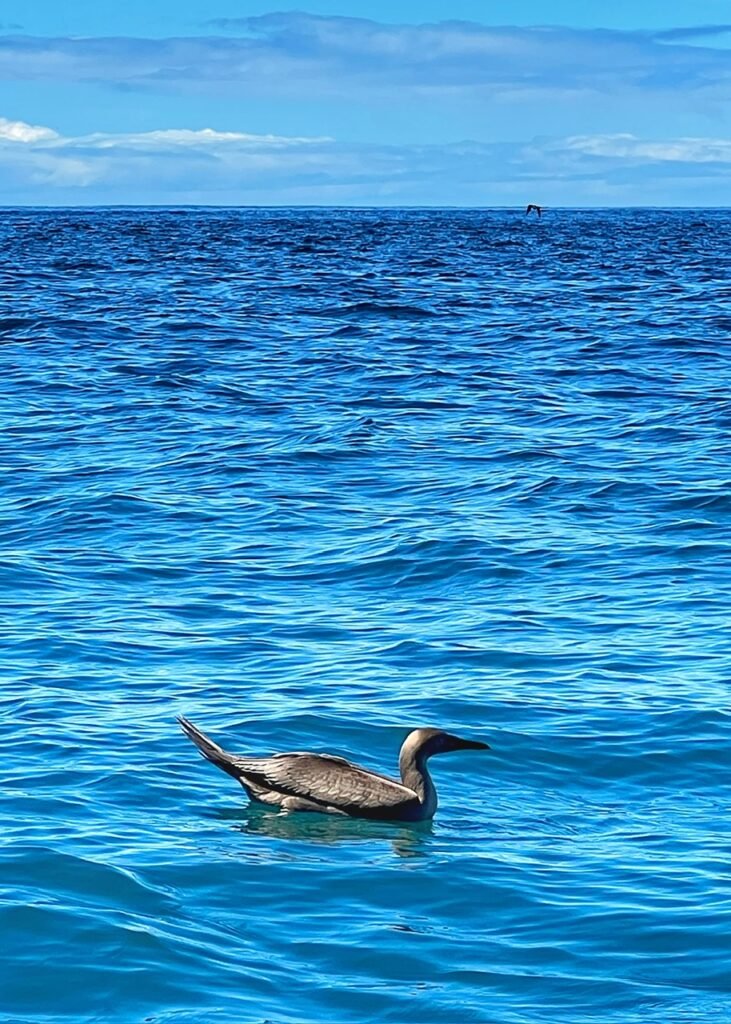
With the help of a guide, Mandy spotted a RED-footed Booby, which was apparently a big deal(?) because they usually only hang out on the south side of the island. But, considering the bird wouldn’t unveil his feet, he basically looked like a dignified duck.
So that’s it…Poor Man’s Galápagos. The taste was truly fantastic but calling it that seems a bit far-fetched. We were one month shy of whale season, which probably would have added to the experience. Still, we highly recommend the experience if you don’t have the budget for the real deal.
The Community of Agua Blanca

From Puerto López, we took a half day trip about 15 minutes north to Agua Blanca, which was a chance to visit an authentic Ecuadorian ancestral indigenous commune which has been designated for community tourism. Unfortunately, it’s not accessible by local bus, so we took a taxi which cost $15 round trip.
As you can see, the modern and colorful village sign of Agua Blanca doesn’t quite fit in with its surroundings. This incredibly tranquil ancient settlement is in one of the oldest archeological sites in South America dating from 1500 BC. For $5/person, you receive a local guide who takes you through the museum of pre-Colombian art of the Manteño culture, a forest hike, a soak in a sulfur pool, a mud mask and the chance to pick from three types of massage for additional cost of $15. Plan to spend a few hours to drop in a hammock for maximum relaxation.

The community has a small church and a museum in the center of the village which is made of rudimentary design.

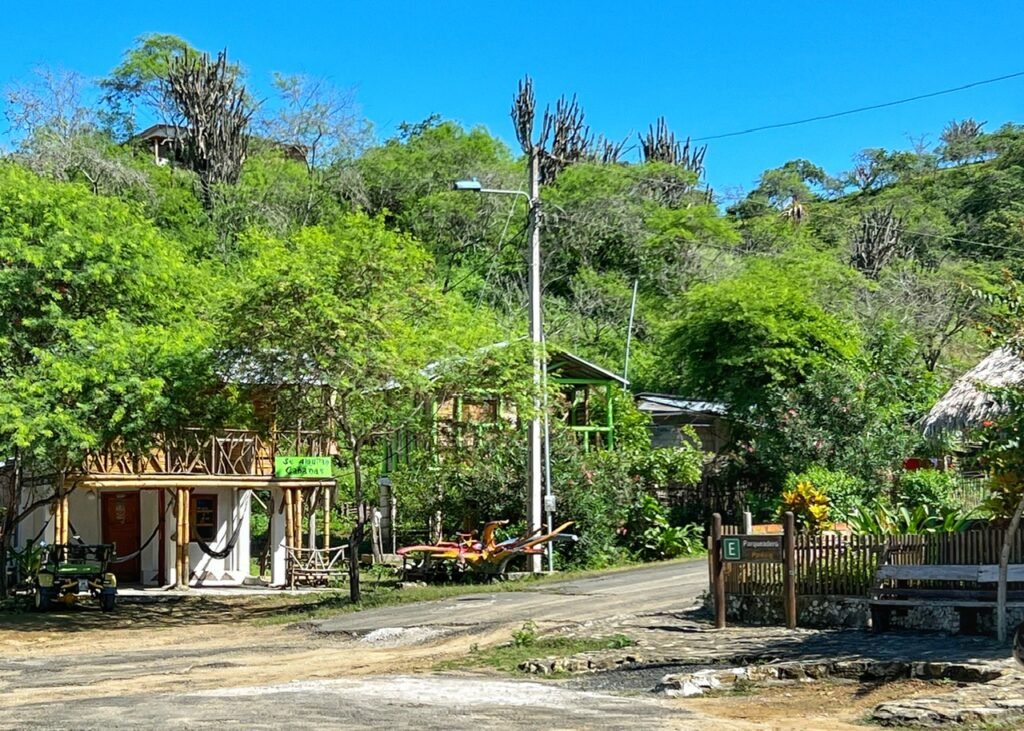
The village, entrance to the museum and the a small artisan market.
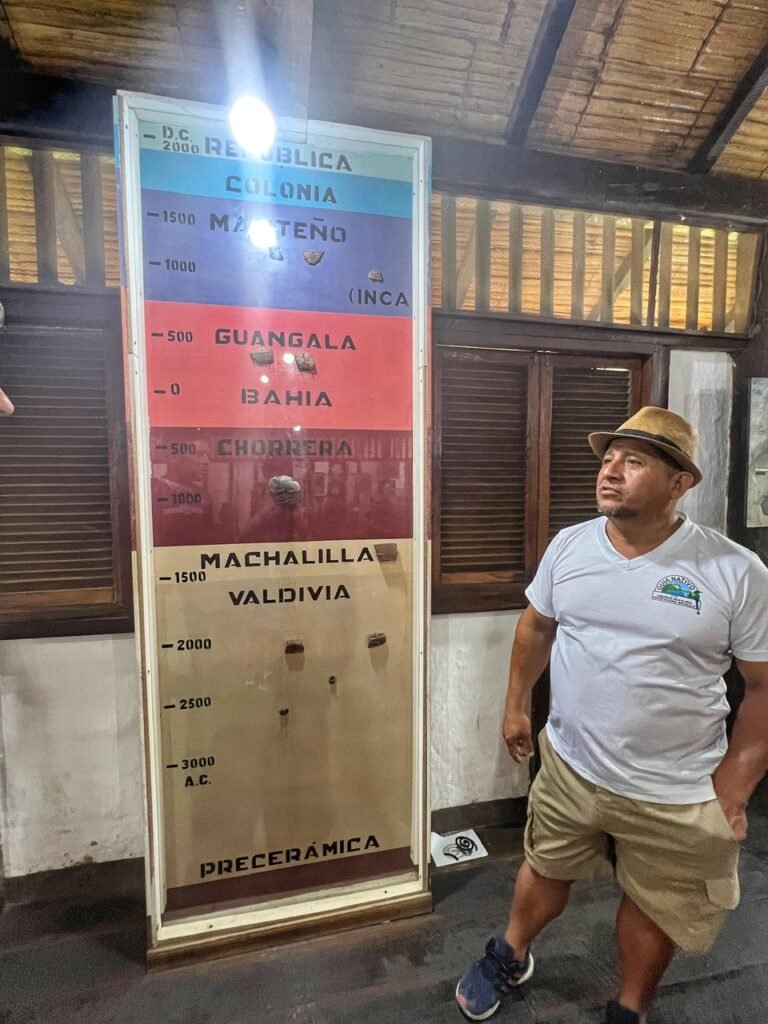
The guide explained (in Spanish) that the ancient Agua Blanca Community was among the last coastal community in Ecuador to succumb to colonization. As a result, many traditions and archeological findings are preserved. A set of temples, houses, and plazas typical of the Manteño culture, as well as archeological items and skulls, can be found on this site dating from 1500 BC.

Some of the remains which have been found. They were buried in large stacked ceramic pots in a fetal position.

Some of the stamps they used for tattoos. These tattoos were used to differentiate people, mostly shamans or chiefs for their skin and sometimes told which family they came from with the unique design.
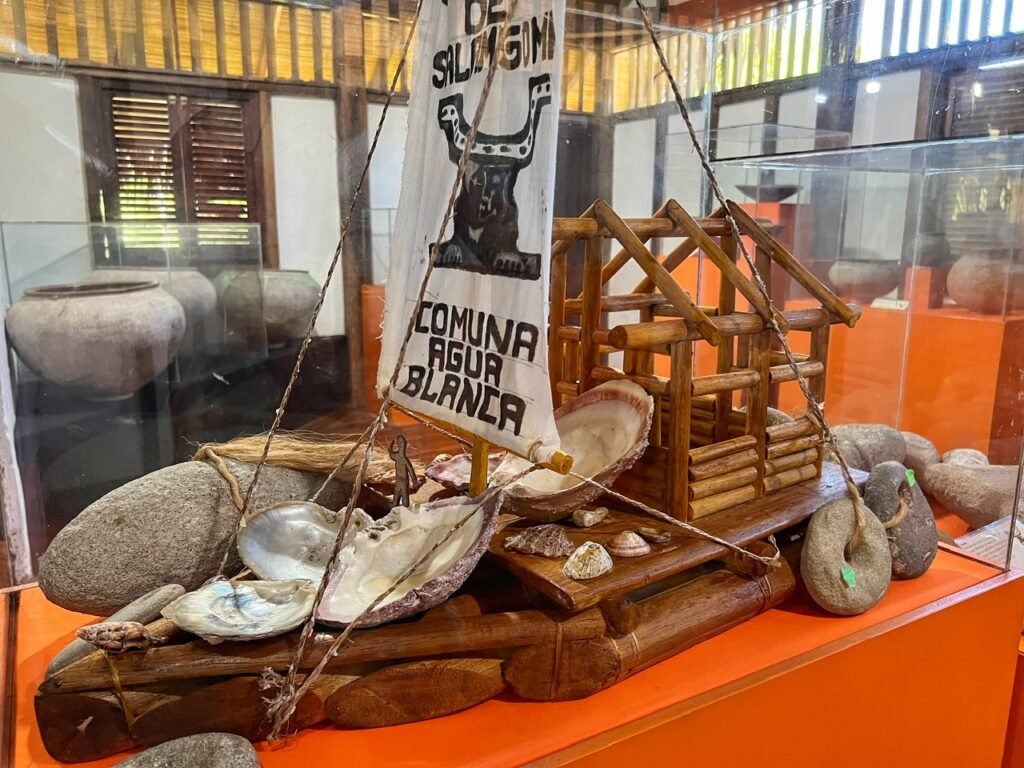
This was a model of the boat the seafaring Mantenos used to go up and down the coast and they commonly lived on them as they traveled.
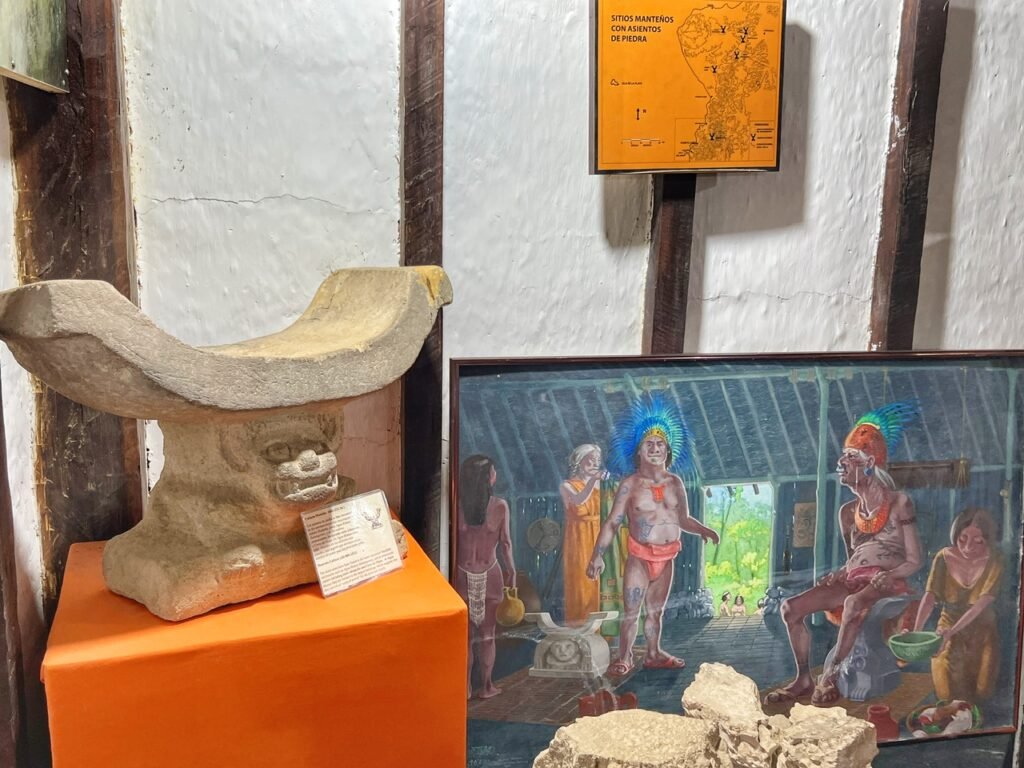
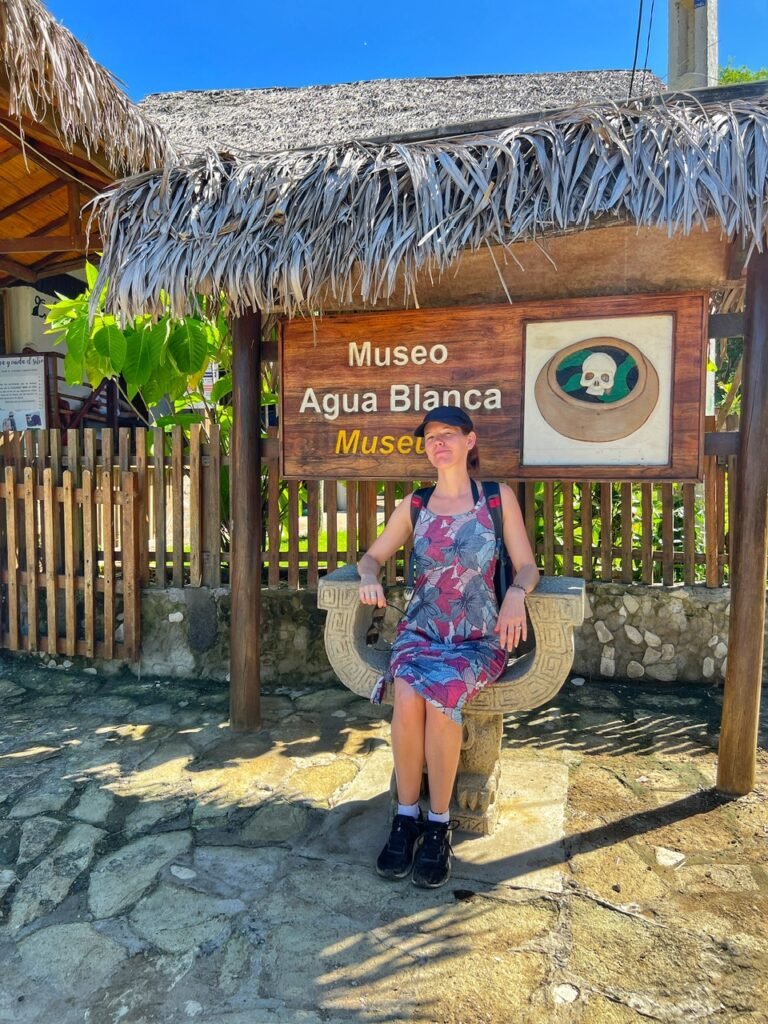
A throne of yesteryear. Used as a seat of power for principal chiefs. And Mandy.
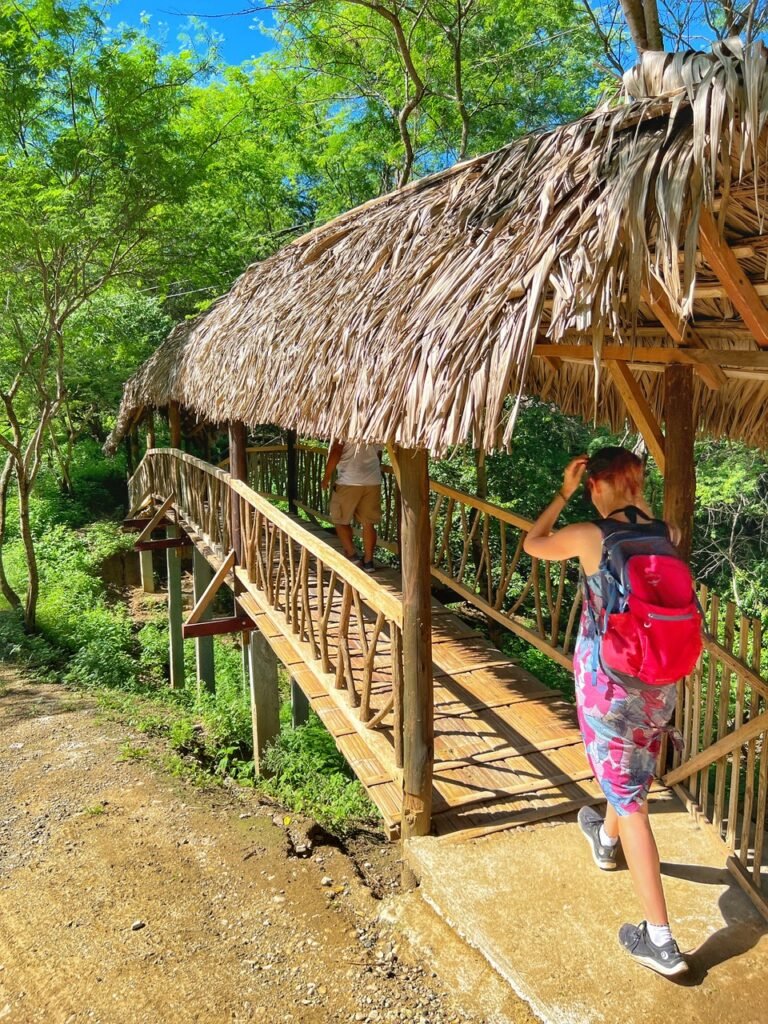
A bridge heading into some of the areas where these ruins were found in recent years.
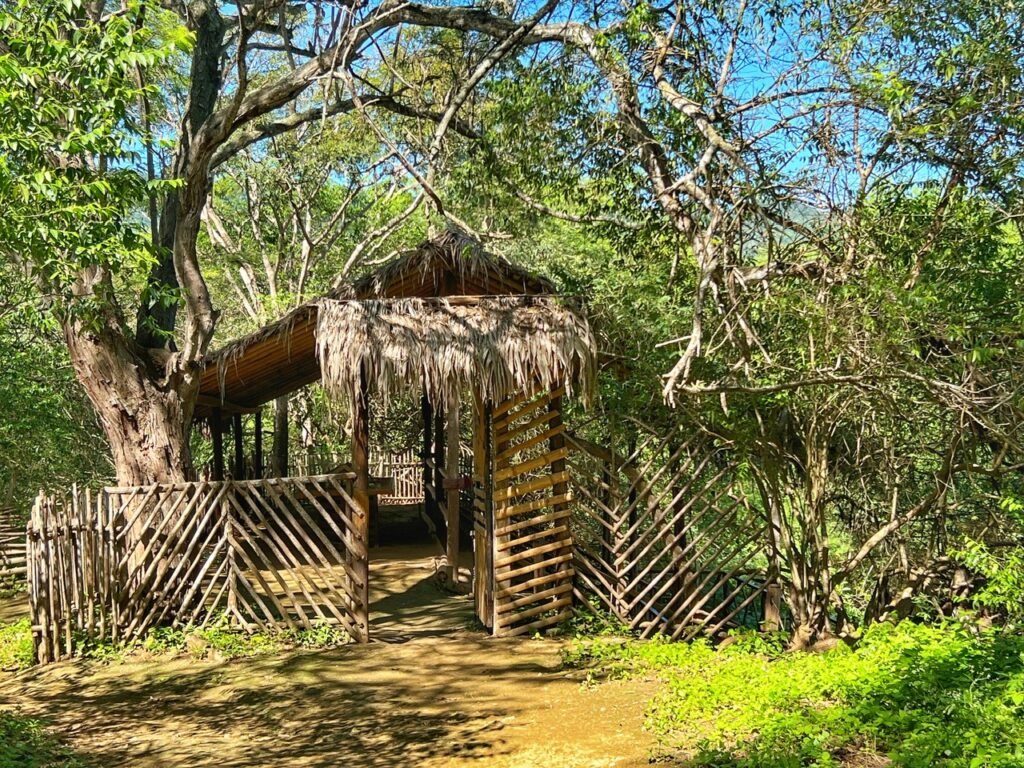
Some structures in the community, which was surrounded by melodious bird calls.
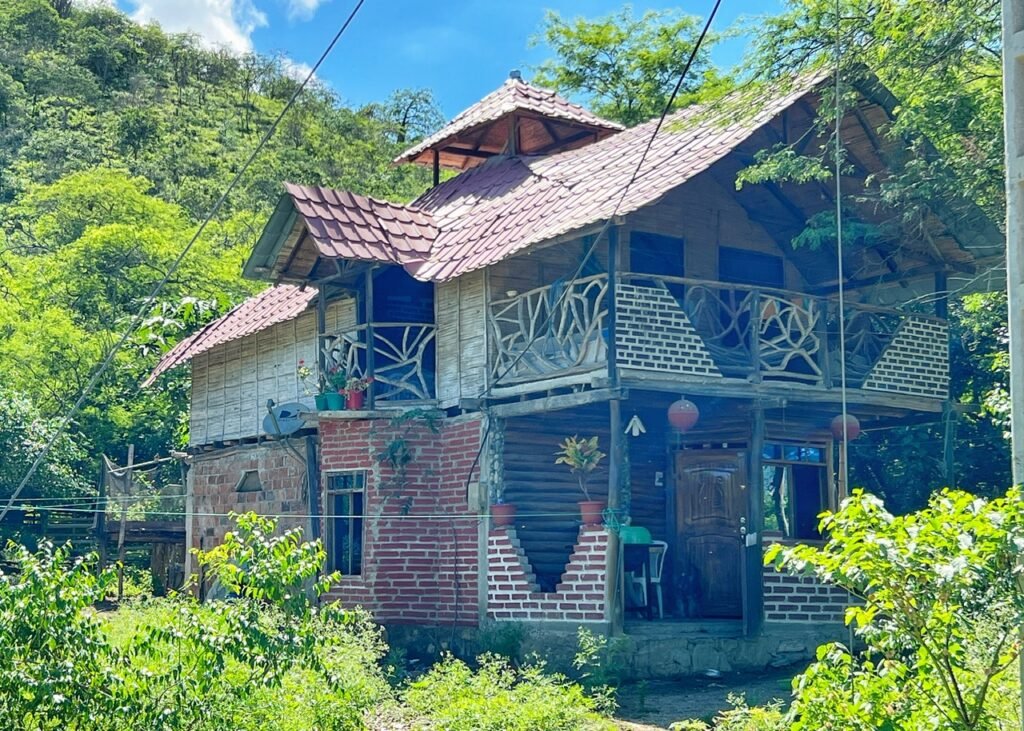
We’ve heard of mixed-media art but never a house. So fascinating.
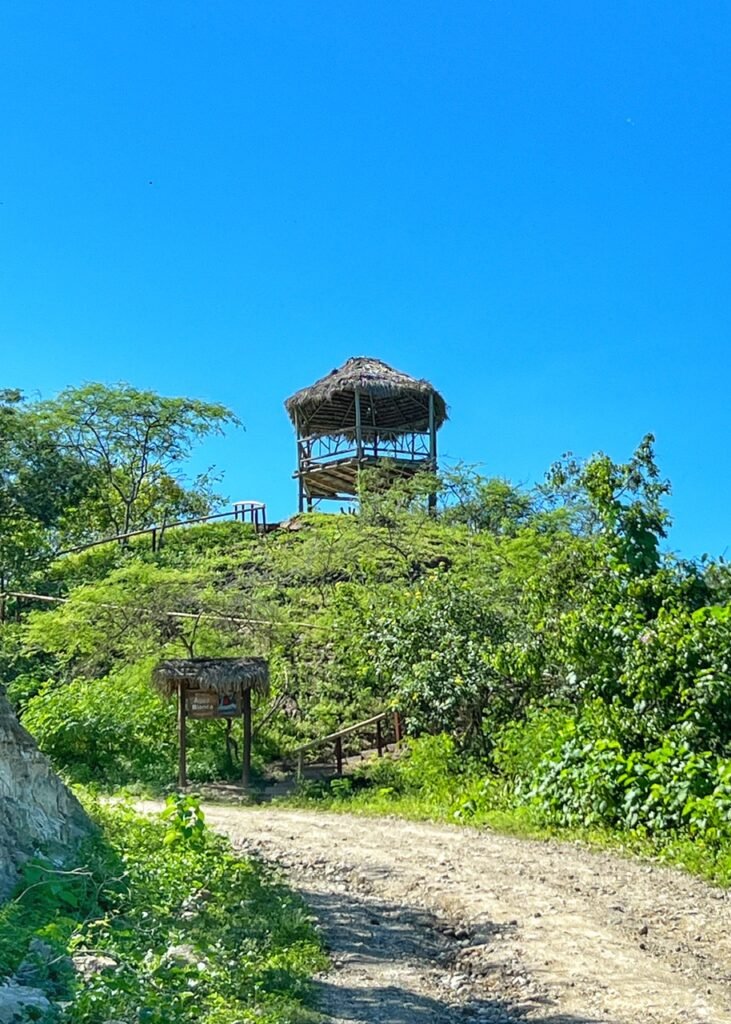
The two-story tall “mirador” of the community.
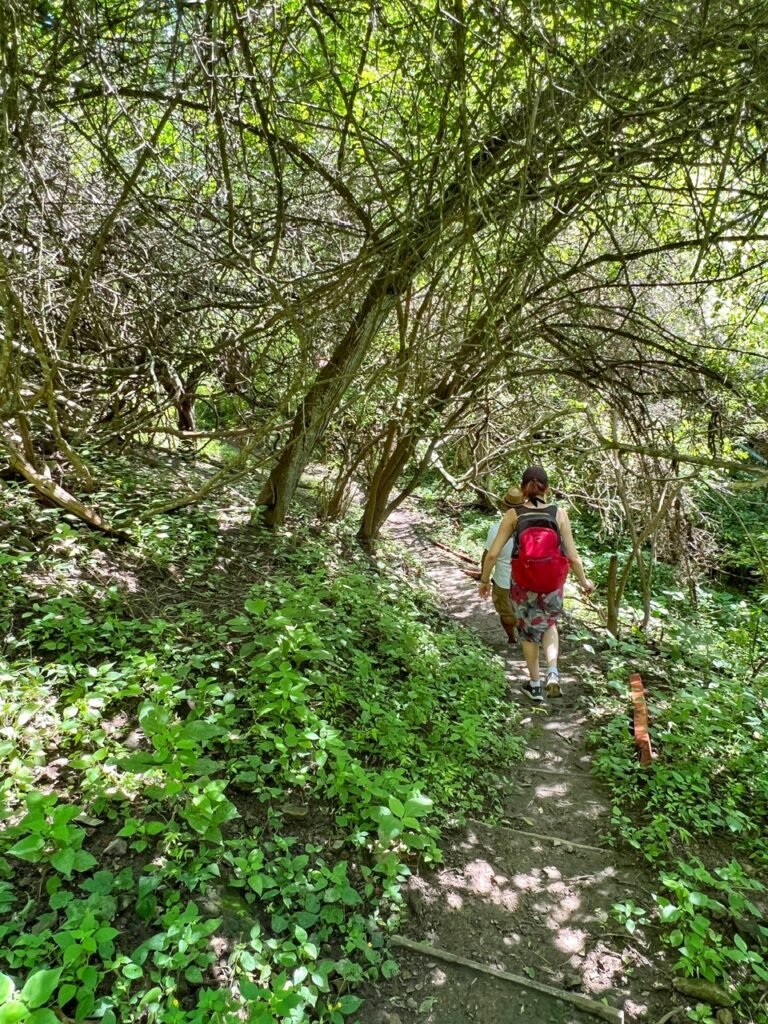
Walking through the forest. The calls of the birds were incredibly tranquil.
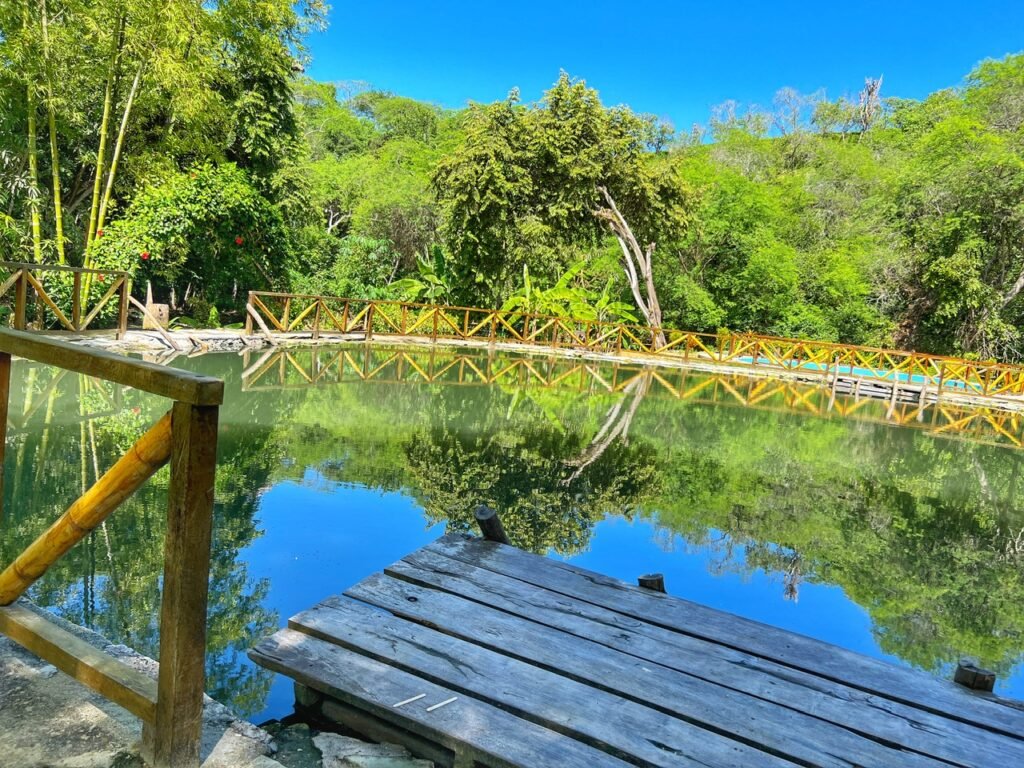
We then arrived to the four-meter deep natural sulfur lagoon was filled with tepid, blissfully refreshing water which is full of 70% mineral waters and therapeutic muds to purify the skin of toxins.
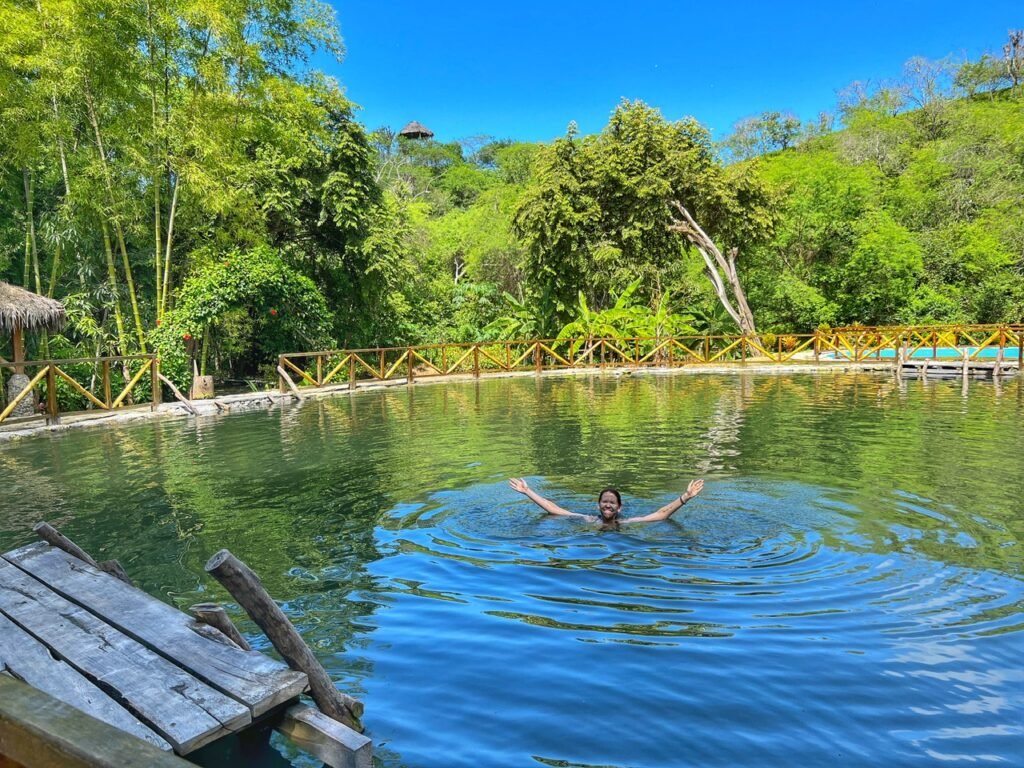

We had the sulphur pool all to ourselves, which was well worth the $5 alone. They also gave us a mud mask so we could look like mud people (again.)
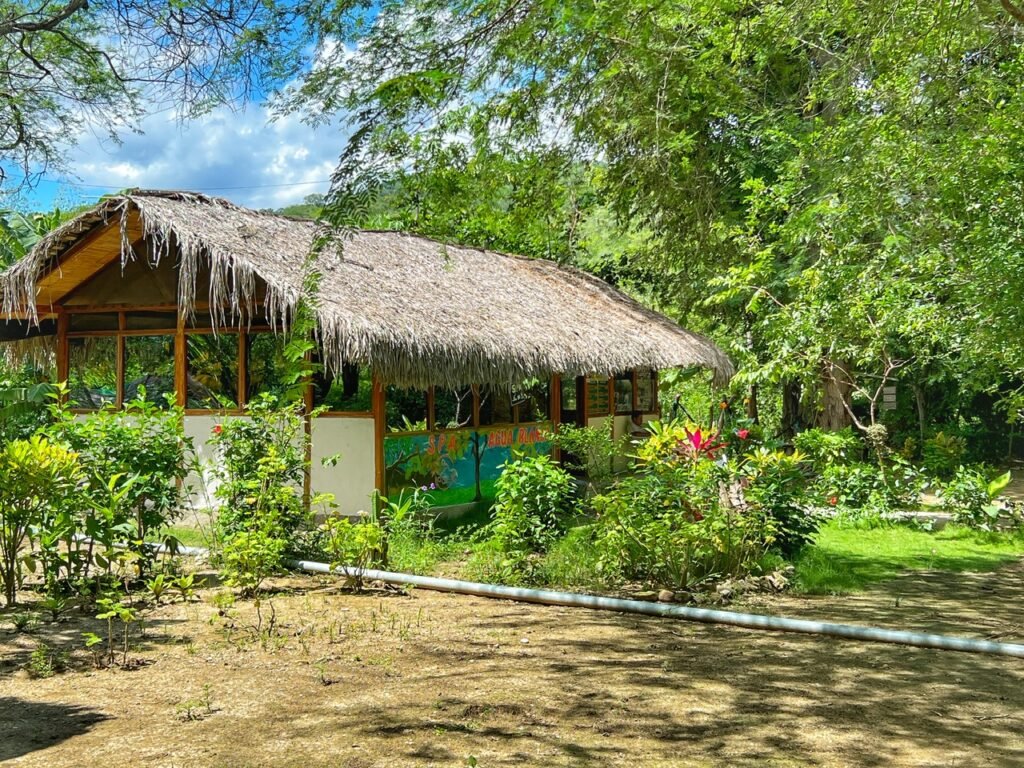
Where you go to get spaaahed!



